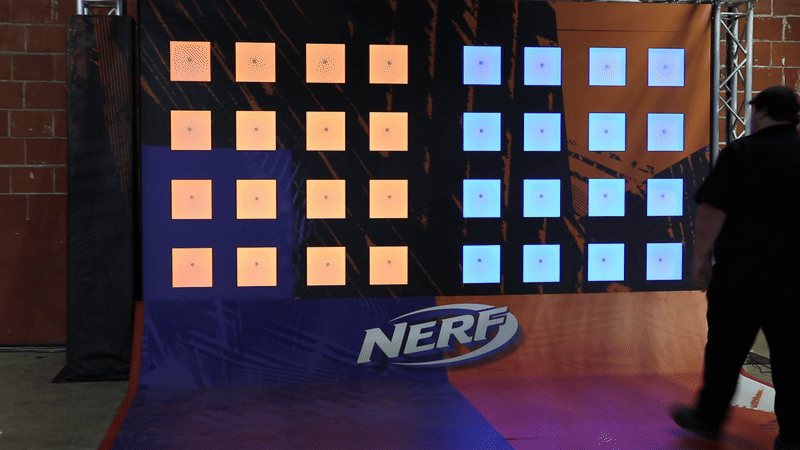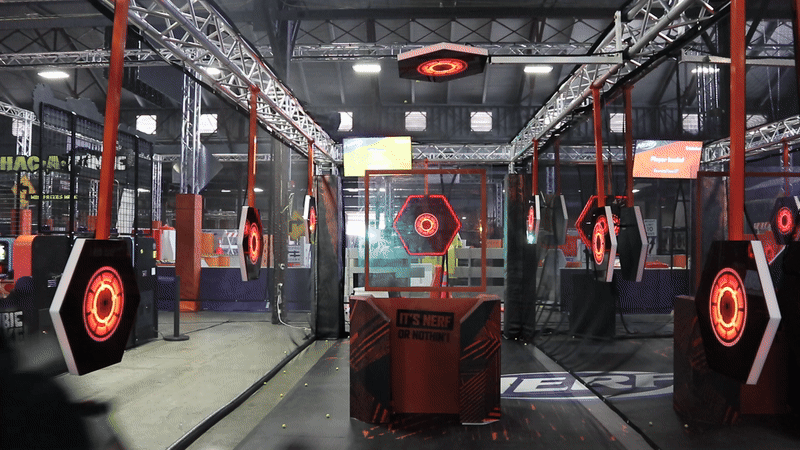NERF Challenge
NERF Challenge
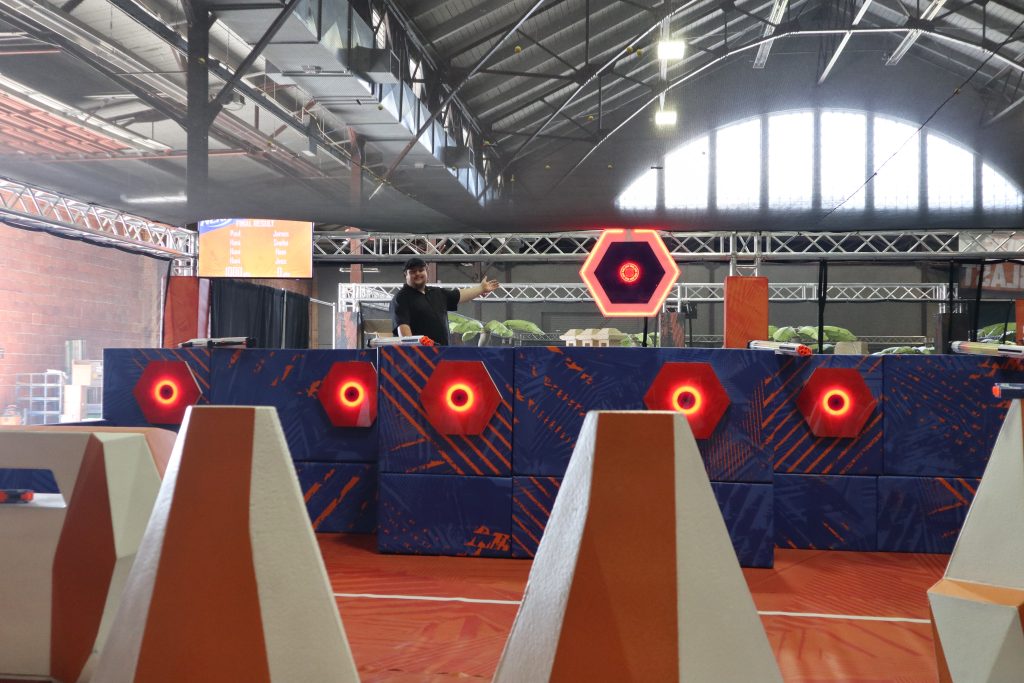
Project Overview
The NERF Challenge is an interactive live attraction that brings the excitement of NERF products to life in a large-scale, action-packed environment. Spanning approximately 90,000 square feet, this experience offers a variety of activities designed to test participants’ speed, agility, and accuracy.
Breakdown
The event featured 20 individual large-scale arcade games, each designed to showcase different styles of NERF blasters in unique and entertaining ways.
From the outset, the project faced several technological constraints:
- The entire event needed to be designed for mobility, as it was intended to travel.
- Each activation had to function independently or as part of an integrated system.
- When connected as a group, NFC wristbands allowed participants to badge in at individual activations, enabling score tracking on a cloud-based global leaderboard. Leaderboard results for the current location were displayed on a massive LED wall within the event venue.
Over the course of three years, we developed three versions of this project. My role and responsibilities expanded significantly during this time.
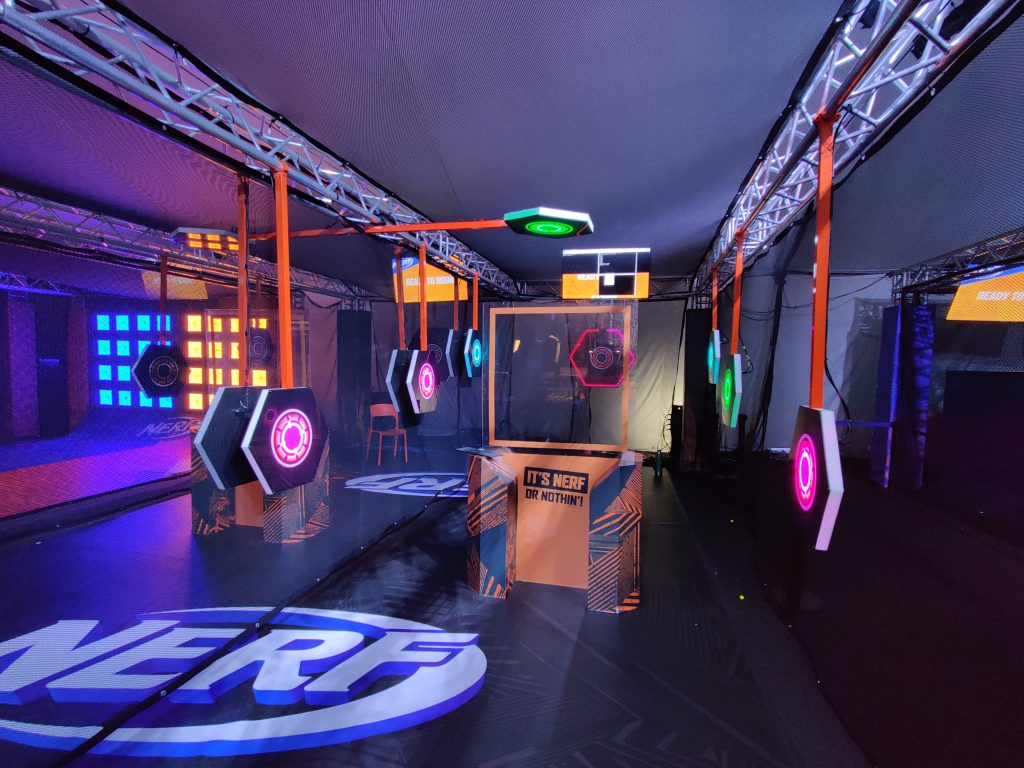
Initial Role and Accomplishments
I was initially brought onto the project as a contractor to address specific technical challenges:
- Each activation needed its own internal network.
- Activations needed to operate as standalone units or connect seamlessly to a larger network.
- Remote updates had to be enabled across all activations.
- Assembly on location required systems that could be managed by a build team with minimal technical expertise.
- Systems had to function reliably, even when we had no control over the venue’s networking equipment or firewall settings.
I exceeded expectations in solving these challenges. As a result, I was offered a full-time position on the project. Recognizing my ability to manage increasingly complex tasks, I was given two three-person teams, one focused on hardware and the other on software. I reported directly to the electronics integration department head.
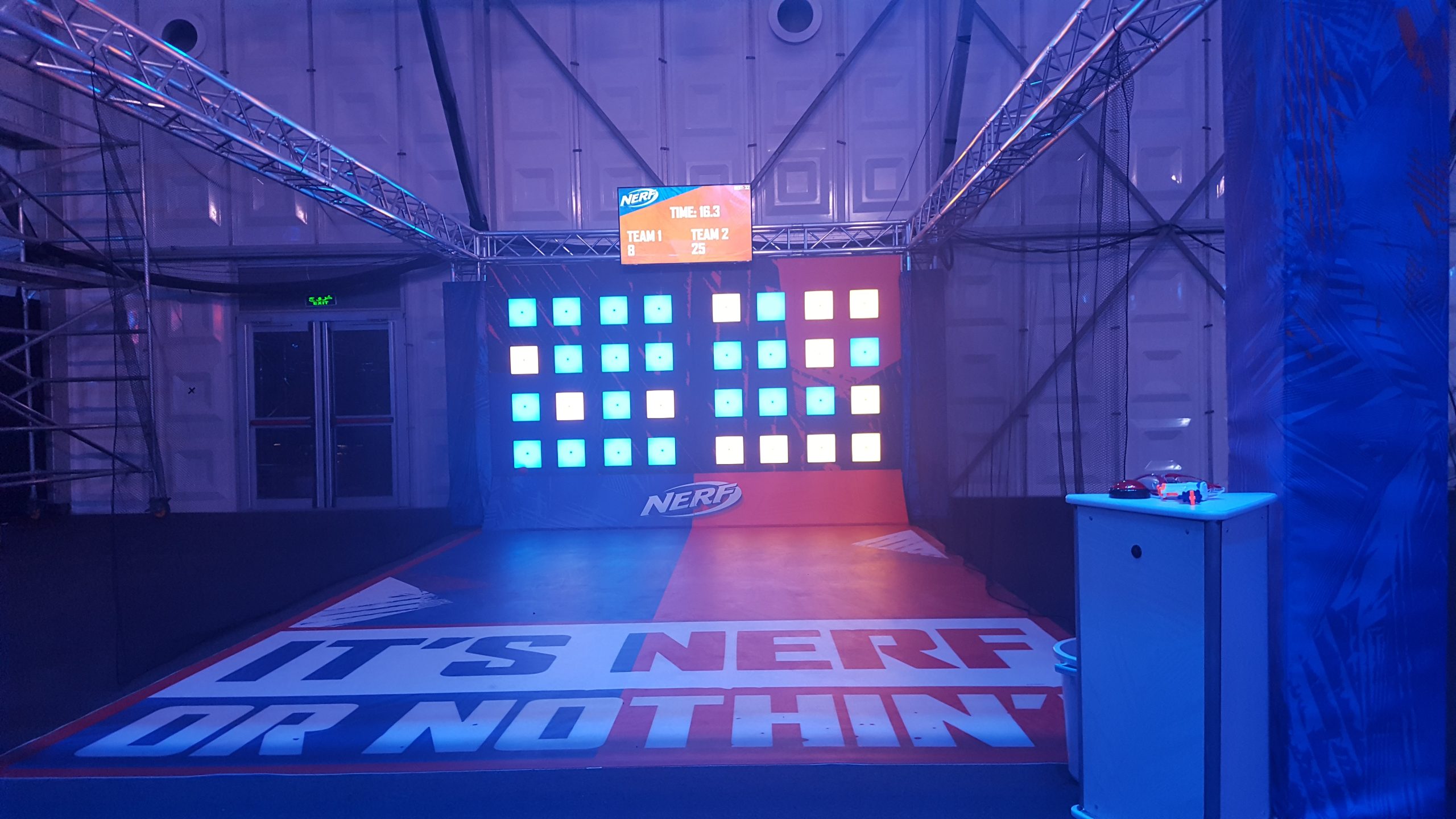
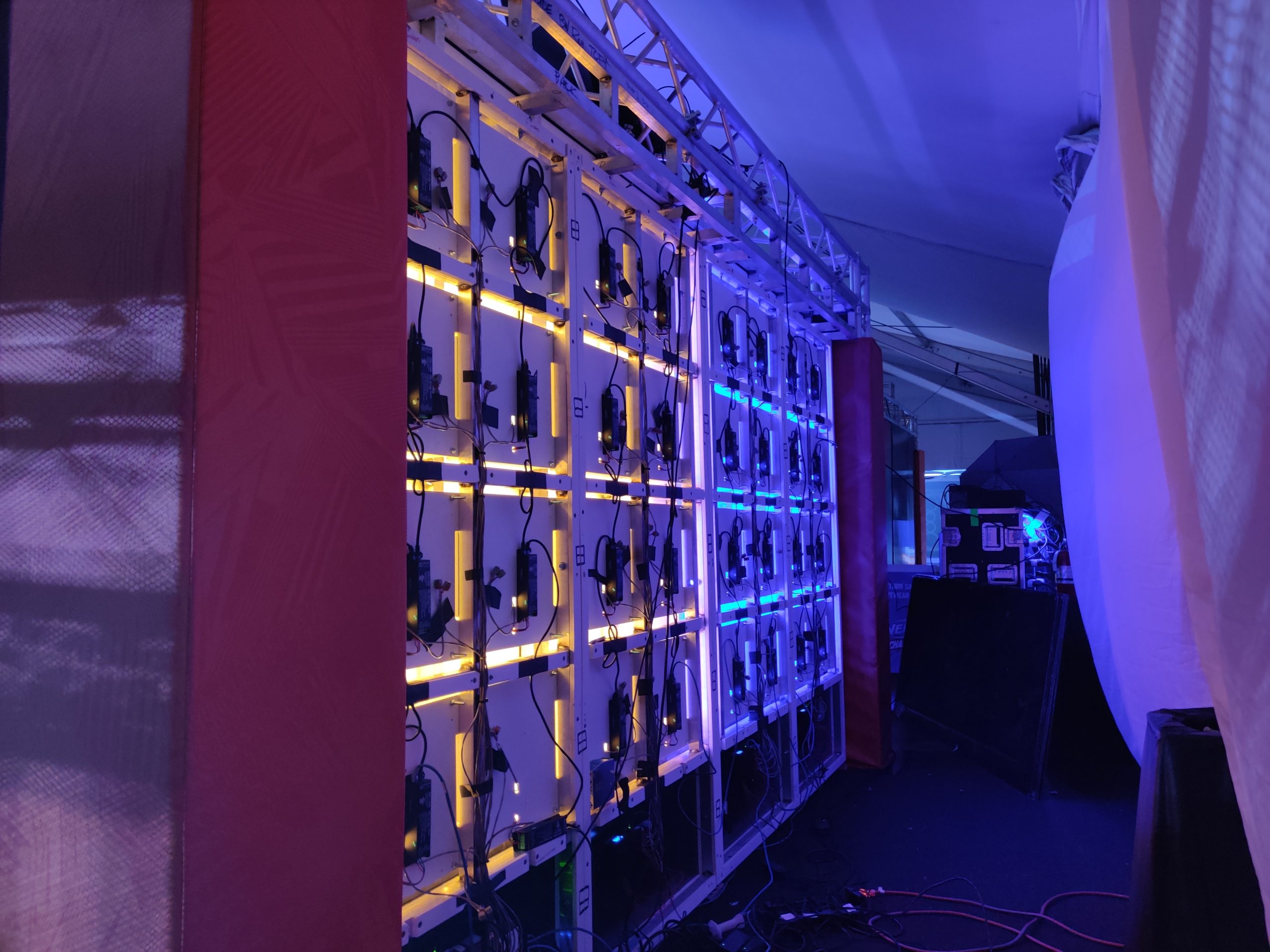
Revision 2
At this stage, I was responsible for developing and prototyping new features for the latest project iteration. For each feature, I evaluated potential solutions, built functional prototypes, and determined the best direction for production. Depending on workload and priorities, I either delegated tasks to my team members or developed prototypes personally.
My role also required me to ensure seamless collaboration between the hardware and software teams. Once a production-ready design was completed, it was handed off to the department head, who coordinated with the build team for smooth integration.
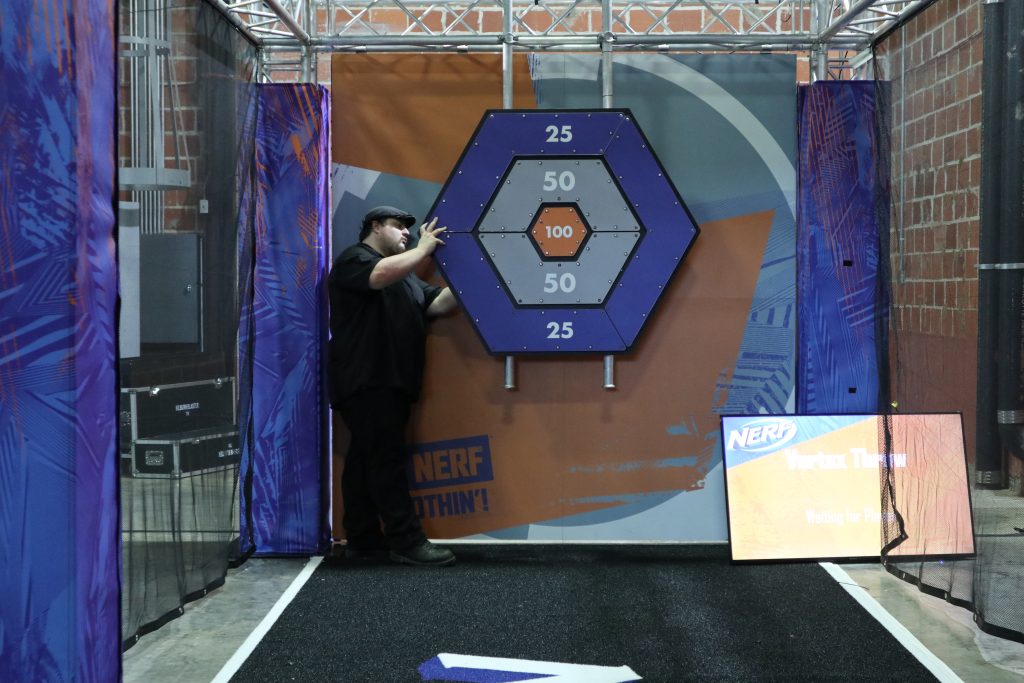
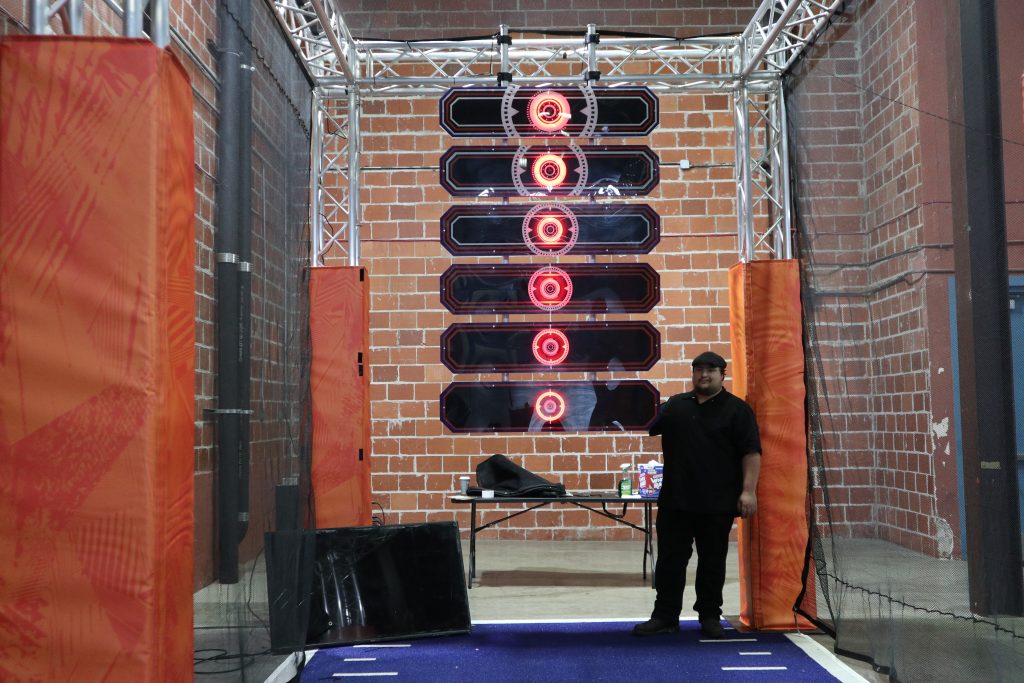
Revision 3
Following Revision 2, our department head left the company, and I was promoted to electronics department head. We hired two dedicated programmers to strengthen the software team, while electronics prototyping was outsourced to a third-party contractor.
As department head, I coordinated the efforts of the outsourced hardware team and the in-house software team. I worked closely with the build team to ensure proper integration and implementation. Leveraging the outsourced team allowed us to enhance the complexity and sophistication of our circuit designs, resulting in more polished and professional products.
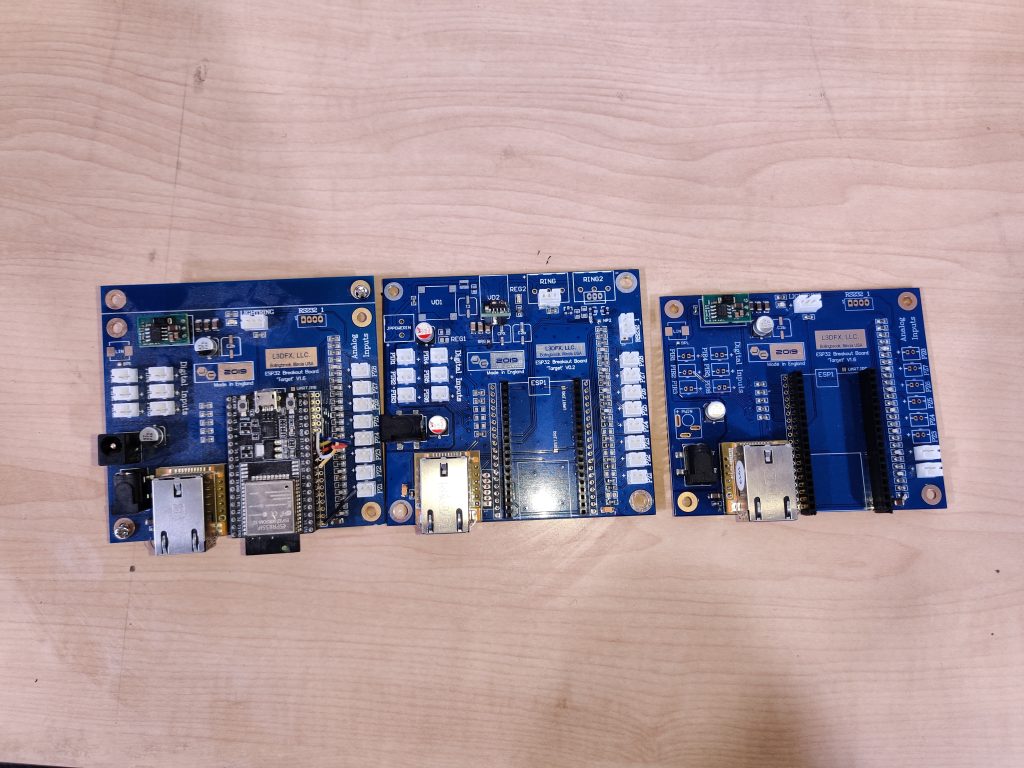
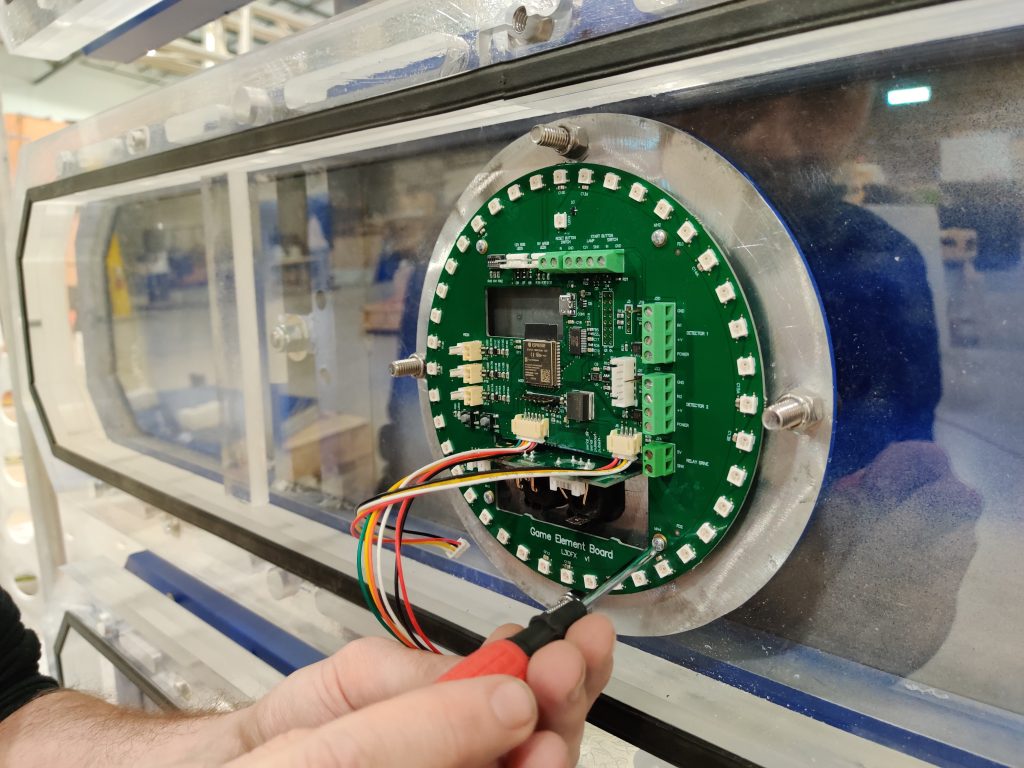
Reflection
This was an incredibly fun and challenging project. Over the multiple years I was involved, I expanded my knowledge of team leadership and honed my skills in both electrical and mechanical design. This role ultimately inspired me to pursue building interactive art for museums as a contractor, further broadening my creative and technical expertise.
Functionality Testing
